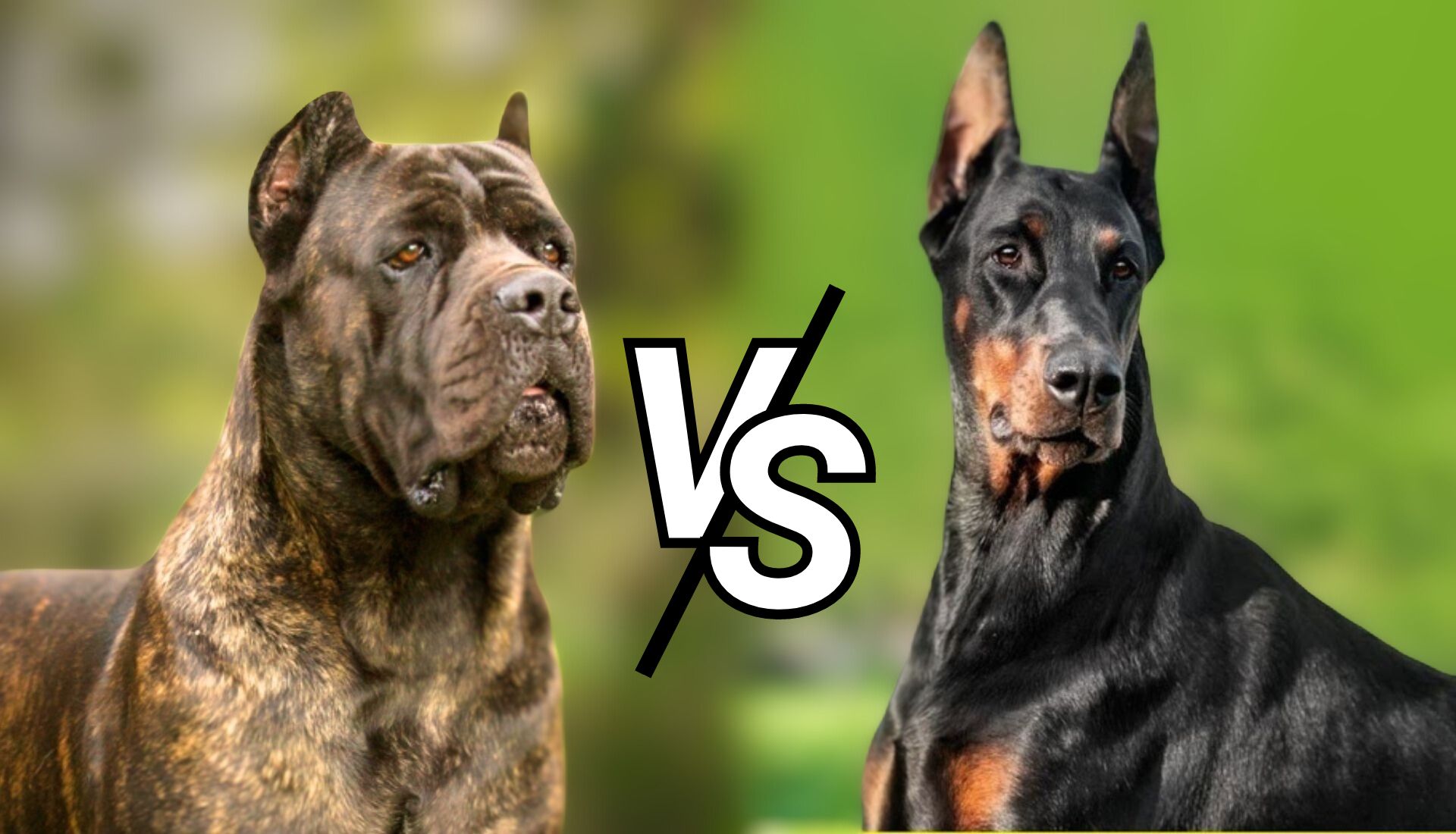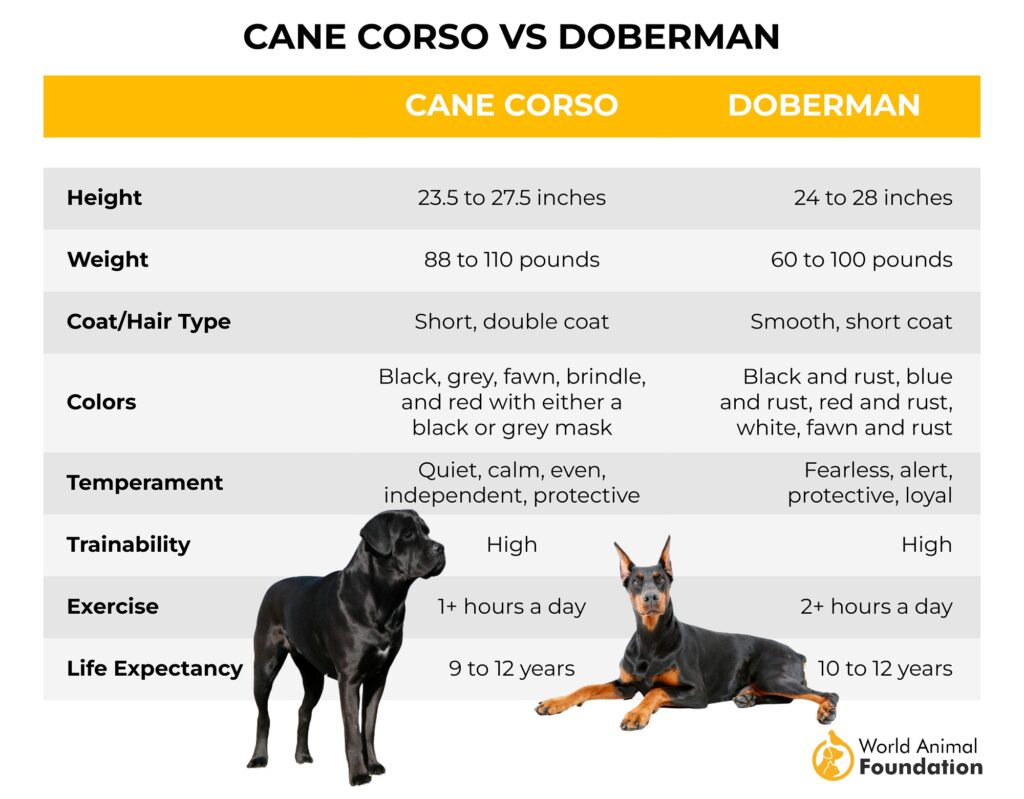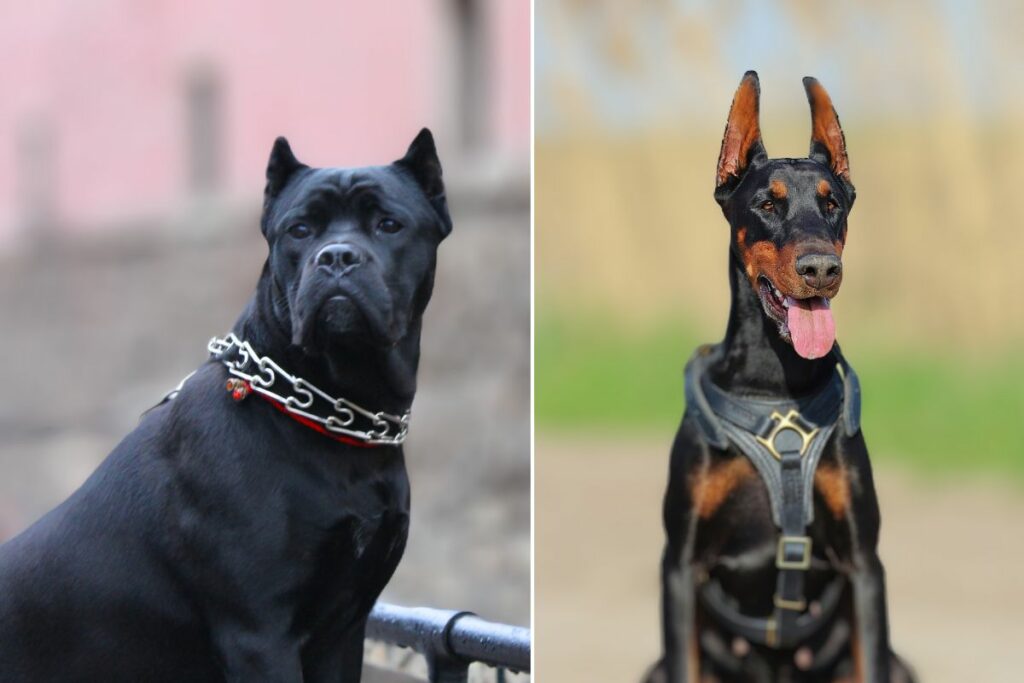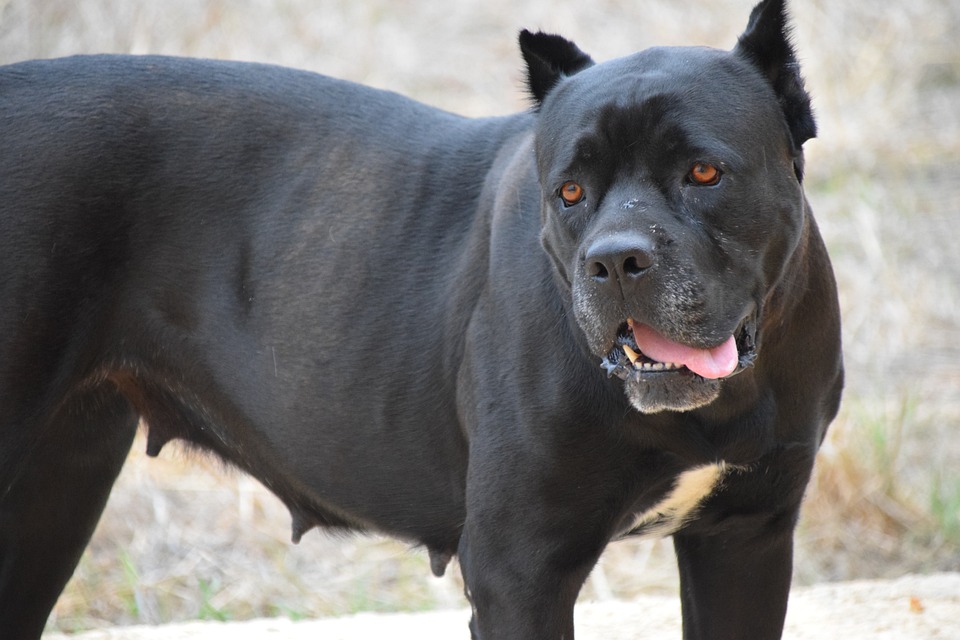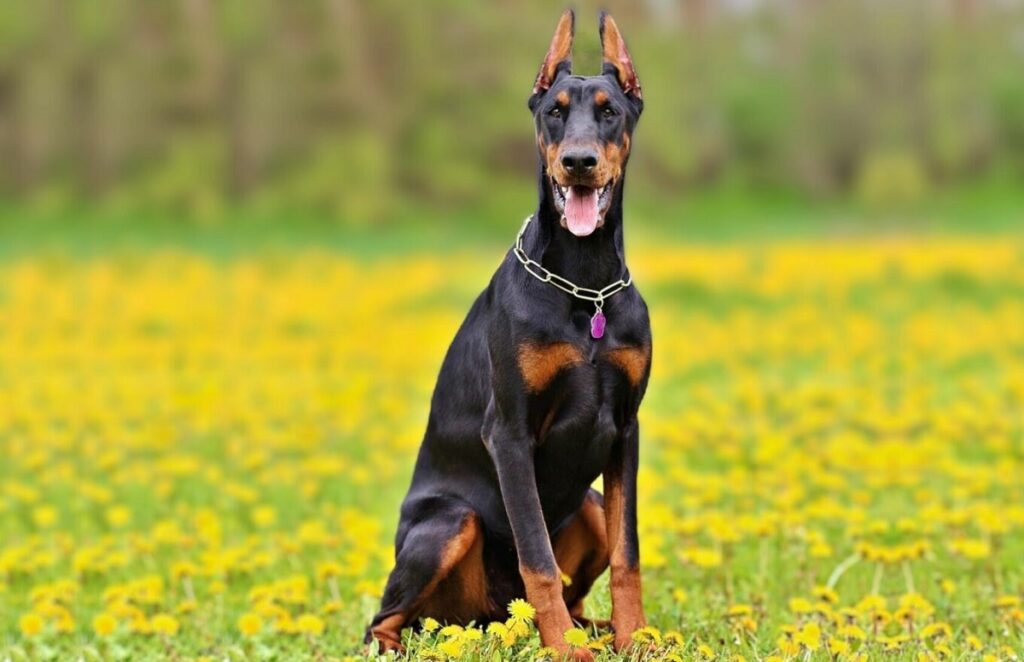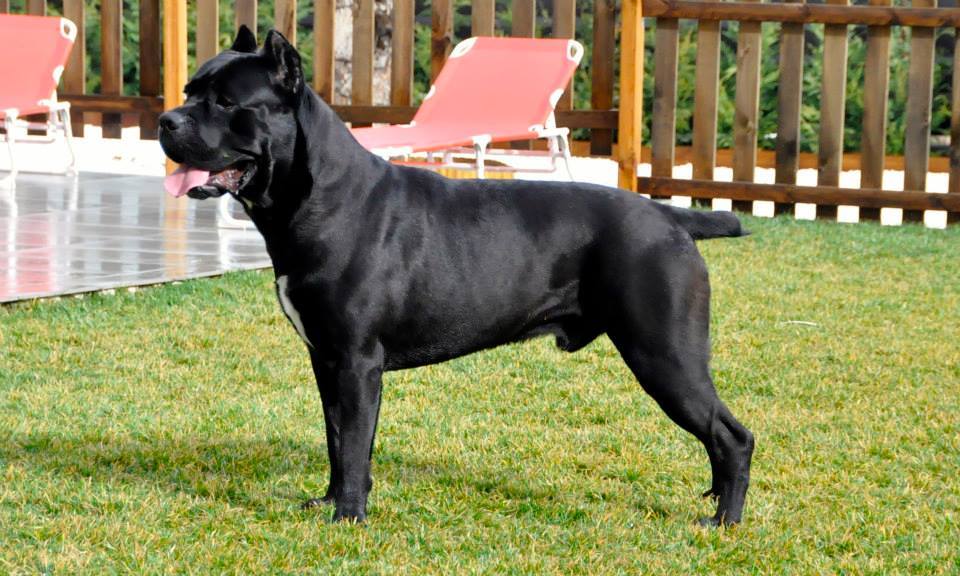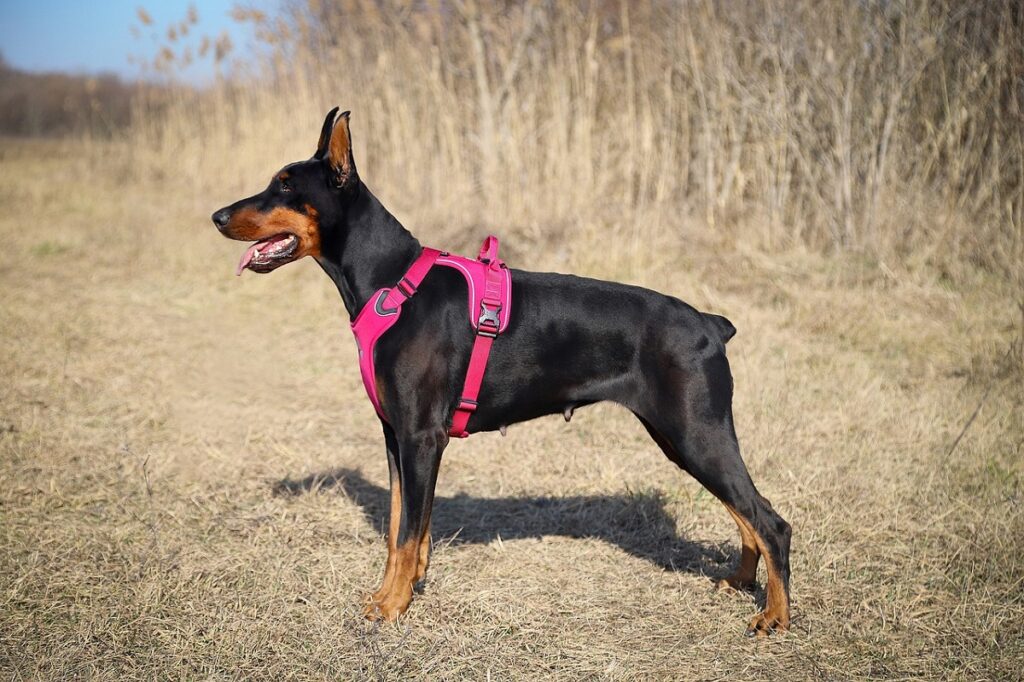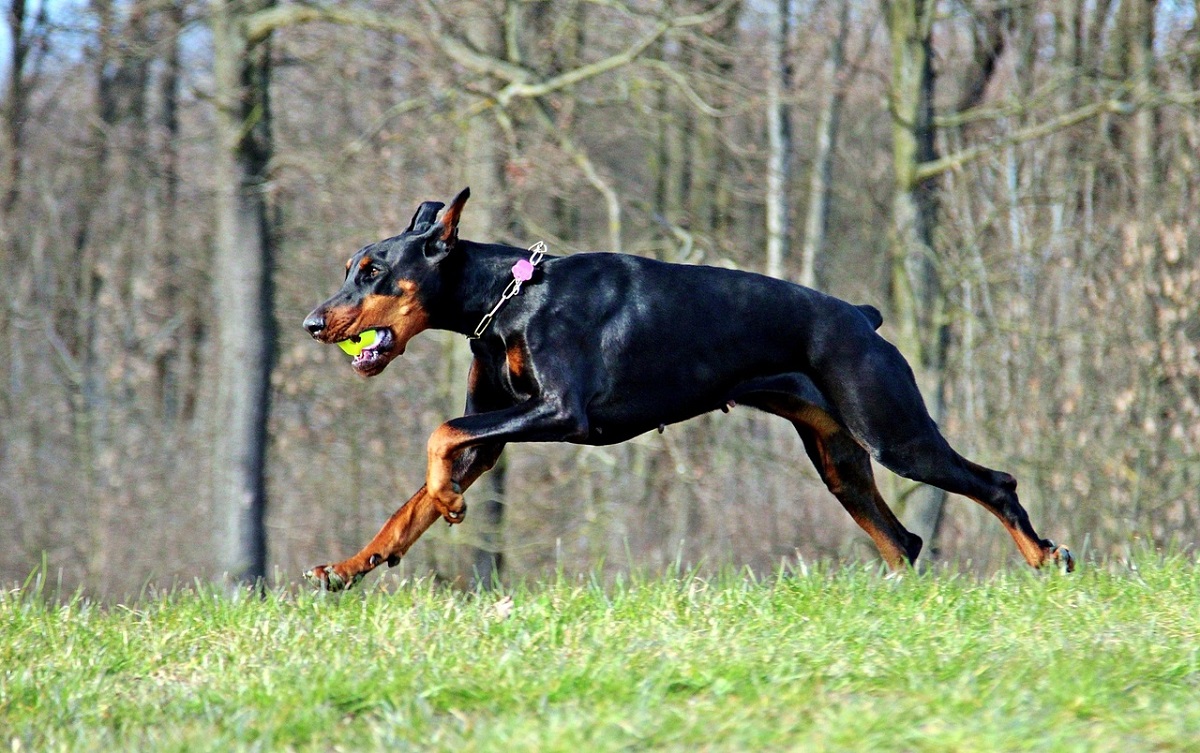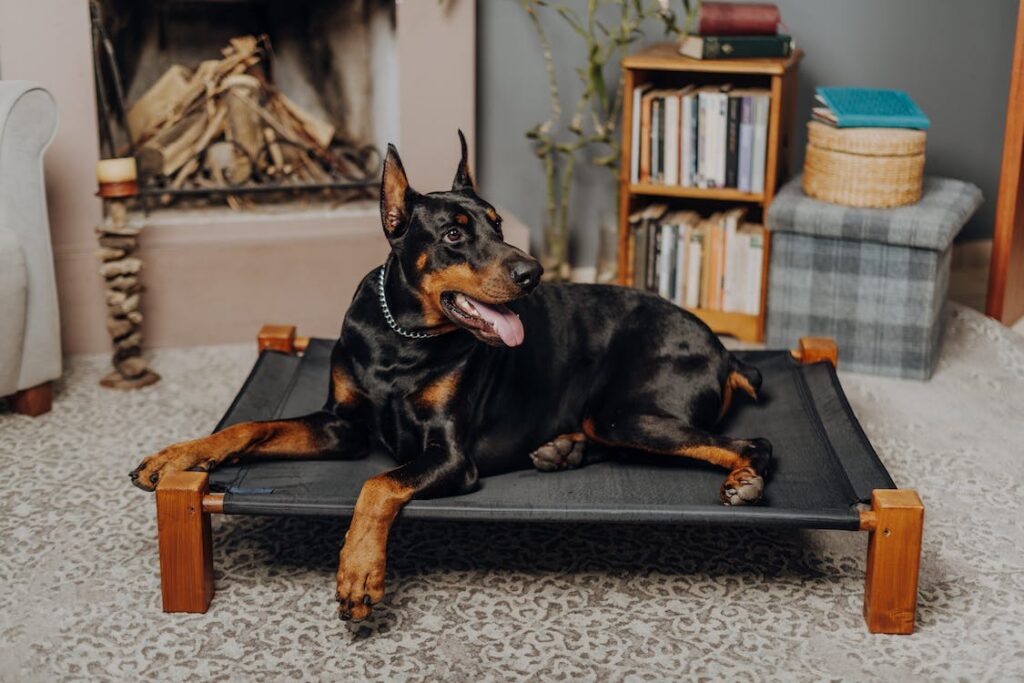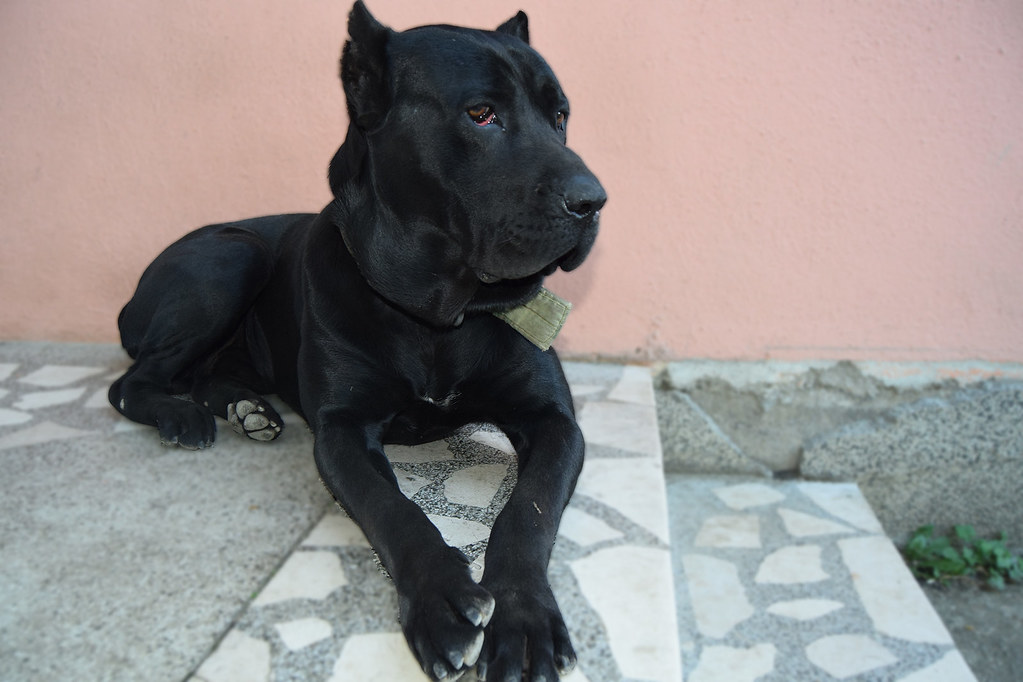The powerful Cane Corso and the sleek Doberman: two imposing breeds often compared, but distinctly different. Choosing between them requires careful consideration of your lifestyle and experience. While both offer loyalty and protection, the Corso’s massive build and guarding instincts contrast with the Doberman’s athleticism and trainability. This comparison delves into temperament, exercise needs, health concerns, and more, helping you determine which of these magnificent breeds is the perfect fit for your home. Which reigns supreme? Let’s uncover the answer.
If you’re searching for the perfect guard dog, you might find yourself torn between the Cane Corso and the Doberman Pinscher. Both of these large breeds are alert and devoted protectors of their families, showcasing impressive discipline and work ethic. Renowned for their strong sense of duty and protection, both the Cane Corso and Doberman excel in their roles.
However, while they share some similarities, they’re not the same. Choosing the right breed for your home means understanding their differences.
We’re here to simplify that for you, offering clear insights into what sets the Cane Corso and Doberman Pinscher apart. This way, you can make the best decision for you and your family!
Cane Corso vs Doberman
Cane Corso vs Doberman: Origin
The Cane Corso and the Doberman differ mainly because of their distinct backgrounds and the specific purposes for which they were bred.
The Cane Corso hails from ancient Italy, descending from the now-extinct molossus, a mighty Roman war dog. Its very name, blending Italian and Latin, means “guardian dog.” Initially, the Cane Corso was a jack-of-all-trades, serving as a guardian for livestock, a companion in battle, and a protector of homes. There was a time when this dog breed nearly vanished, but thanks to dedicated fans, it’s still with us today.
On the other hand, the Doberman’s story begins in Germany in the late 19th century, crafted by Karl Friedrich Louis Dobermann, a tax collector seeking the ideal protector. Born from a mix of cattle dogs and shepherd dogs, the Doberman was designed to excel in protection, a role it proudly fulfills to this day.
Cane Corso vs Doberman: Height and Weight
When you look at the Cane Corso and the Doberman, their heights might trick you into thinking they’re pretty much the same. The Cane Corso’s height varies from 23.5 to 27.5 inches, and the Doberman isn’t far off, standing between 24 to 28 inches tall.
But when it comes to their weight, that’s where you’ll notice a big difference. The Cane Corso is the heavyweight champ here, tipping the scales at 88 to 110 pounds. Meanwhile, the Doberman, despite its tall stature, weighs a bit lighter at 60 to 100 pounds.
So, even if they might look eye to eye, the Cane Corso packs more weight, even at its lightest, compared to the slimmest Doberman.
Cane Corso vs Doberman: Coat Type and Color
The Cane Corso sports a sleek, short coat with a light underlayer, available in several dark shades, including unique brindle patterns. On the other hand, the Doberman showcases short smooth coat in classic two-tone combinations like black and rust, and even comes in solid hues, including white.
Cane Corso vs Doberman: Temperament
Both the Cane Corso and the Doberman are great guard dogs, loved for their unwavering loyalty. Cane Corsos might look tough, but they’re actually affectionate dogs with their families, always ready for cuddles, though they might be a tad reserved around little kids. They’re chill and not too vocal, but it might take them a bit to warm up to other pets.
Dobermans, on the flip side, play it cool and might not wear their hearts on their sleeves right away. When they do open up, it’s clear, but they’re not the type to enjoy a rough tumble. They’re more about fun and games without the wrestling. And they’re a bit more stand-offish with other animals compared to Corsos.
Energy-wise, both dog breeds have plenty to go around, but Dobermans might get a bit too enthusiastic, especially around smaller pets and kids, thanks to their prey drive. Corsos, however, are the more laid-back, gentle giants of the dog world.
In the end, choosing between a Cane Corso and a Doberman comes down to knowing they both have strong personalities and specific likes and dislikes. No room for indecision here!
Cane Corso vs Doberman: Exercise
The athletic Cane Corso thrives on exercise, benefiting from a brisk walk or run both in the morning and evening to keep their muscles strong and energy levels in check. As hardworking dogs, they have the energy to burn and need both physical and mental challenges to stay happy and well-behaved. Without enough exercise, they may start showing behaviors you’d rather not see.
Dobermans are equally vibrant and need plenty of exercise to avoid mischief. Without a proper outlet for their zest, they can become a bit of a handful. Mental challenges are just as important for them to keep their sharp minds satisfied. Long walks and a spacious area to sprint are ideal, making them less suited for apartment living due to their need for space and activity.
Cane Corso vs Doberman: Training
Thanks to their deep loyalty and eagerness to make their owners happy, Cane Corsos are among the more trainable breeds. Whether you’re aiming for adorable tricks or need a proficient working dog, a Cane Corso can fit the bill. The key is consistent, positive training, and due to their size, early socialization is crucial to avoid any issues.
Similarly, Dobermans, with their strong loyalty and keenness to please, can be trained effectively with a little patience and steady effort. They might show a stubborn side, but persistence pays off. Keeping training sessions upbeat and engaging is vital, as Dobermans thrive on having tasks to accomplish, which also makes them excellent working dogs.
Cane Corso vs Doberman: Health Care and Life Span
The Cane Corso and the Doberman, while prone to some health issues, typically enjoy a good lifespan of 9 to 12 years for the Corso and 10 to 12 years for the Doberman. They’re pretty much on par in this department.
For the Cane Corso, staying vigilant about potential health concerns like hip dysplasia and bloat is key. Regular checks on their ears, teeth, and nails can help catch any issues early on.
As for the Doberman, they’re generally healthy too, but keep an eye out for bloat, hip dysplasia, dilated cardiomyopathy, and von Willebrand’s disease. Grooming-wise, they’re low maintenance, needing regular brushing and ear cleaning, with baths and nail trims done as needed.
Conclusion
When comparing the Cane Corso and the Doberman, both breeds stand out as remarkable large breed dogs with distinct qualities. Originating from Italy, the Cane Corso, also known as the Italian Mastiff, has a rich history as a great guard dog and is even used in bear hunting.
Pet parents considering a Cane Corso should prioritize consistent obedience training due to their strong-willed nature and double coat. On the other hand, the Doberman, while also a large dog breed, excels as a loyal and vigilant protector.
With consistent training, they make excellent guard dogs and companions for pet parents who appreciate their intelligence and devotion. Whether choosing the Italian breed with a history of bear hunting or the versatile guard dog with a penchant for obedience training, both the Cane Corso and the Doberman bring their own unique charm to the world of large dog breeds.
Ultimately, the “better” breed between a Cane Corso and a Doberman depends entirely on individual lifestyle and experience. Both are intelligent, powerful breeds requiring experienced owners committed to training and socialization. The Cane Corso, with its heavier build and more independent nature, suits those seeking a guardian breed. While the Doberman, known for its athleticism and alertness, thrives in active homes with consistent engagement. Careful consideration of temperament, size, and exercise needs will lead to the ideal match. Researching reputable breeders and meeting individual dogs is crucial for a successful, fulfilling partnership.

